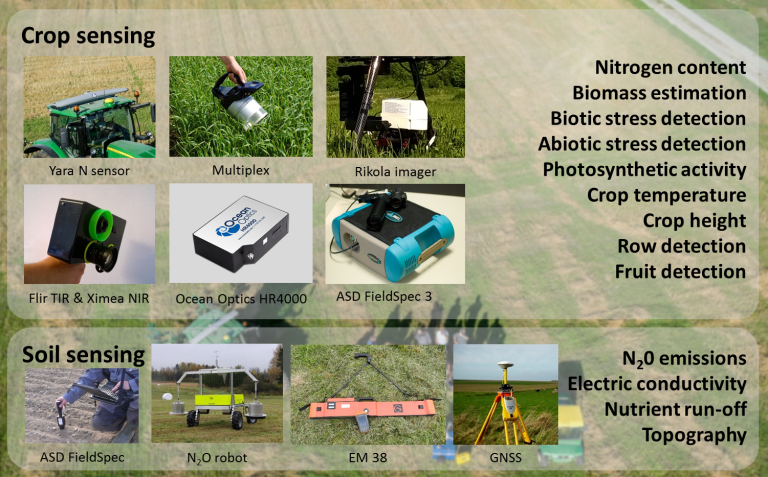
Agriculture and sensors
We utilize a variety of sensors, which mounted on our tractors’ roofs or booms are useful in observing and mapping within-field plant or soil variation. Our focus is on state-of-the-art spectrometers and hyperspectral cameras to obtain crop reflectance and fluorescence data. We also utilize thermal cameras for plant stress detection.
In our field trials, we calibrate the sensors with various crop properties such as nitrogen concentration, biomass, water status and pest infestation. The calibration models are then used to estimate crop status from new sensor measurements. Performing the research on automation of agricultural processes, we turn the information into action. The agricultural sensors are used dynamically to steer the implements, control the variable rate fertilization spreaders or plant protection sprayers. Variable rate system may for example reduce the inputs when the optimal crop status is detected, and increase the inputs with sub-optimal growth conditions. Such a procedure increases production efficiency (lower costs of production) and protects the environment (less leakage). Using our sensor technology, we may also estimate yield level and quality before harvest.
Agricultural sensors provide a huge amount of data and discovering the important information on the measured crop properties requires advanced analytical protocols. We utilize a variety of multivariate statistical methods for decomposition of complex sensor signals. We program automated analytical procedures to increase throughput and usability of our data solutions.

Publications
Abstract
No abstract has been registered
Abstract
No abstract has been registered
